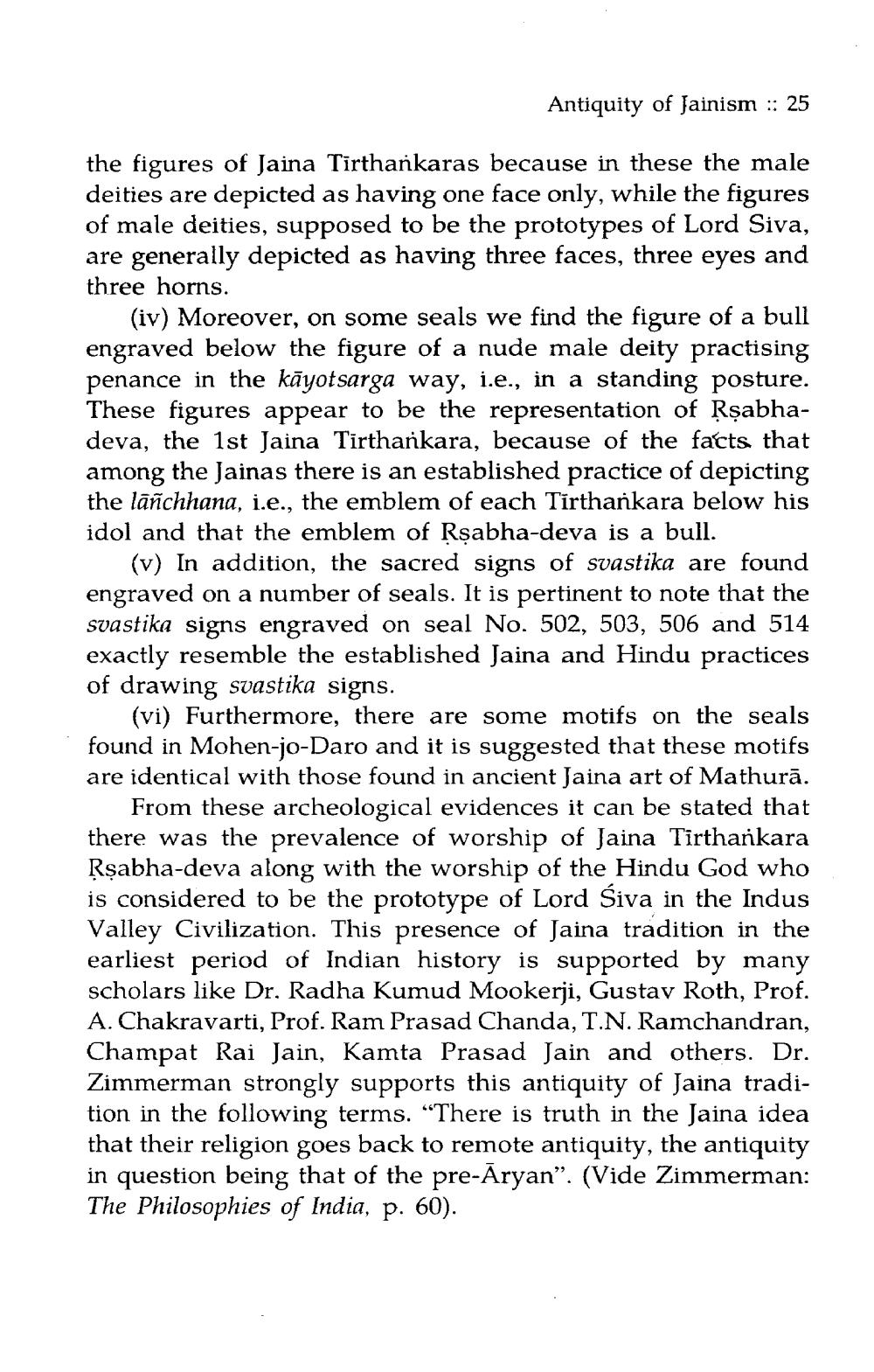________________
Antiquity of Jainism :: 25
the figures of Jaina Tīrtharkaras because in these the male deities are depicted as having one face only, while the figures of male deities, supposed to be the prototypes of Lord Siva, are generally depicted as having three faces, three eyes and three horns.
(iv) Moreover, on some seals we find the figure of a bull engraved below the figure of a nude male deity practising penance in the kāyotsarga way, i.e., in a standing posture. These figures appear to be the representation of Rşabhadeva, the 1st Jaina Tīrtharkara, because of the facts that among the Jainas there is an established practice of depicting the lāñchhana, i.e., the emblem of each Tīrthankara below his idol and that the emblem of Rşabha-deva is a bull.
(v) In addition, the sacred signs of svastika are found engraved on a number of seals. It is pertinent to note that the svastika signs engraved on seal No. 502, 503, 506 and 514 exactly resemble the established Jaina and Hindu practices of drawing svastika signs.
(vi) Furthermore, there are some motifs on the seals found in Mohen-jo-Daro and it is suggested that these motifs are identical with those found in ancient Jaina art of Mathurā.
From these archeological evidences it can be stated that there was the prevalence of worship of Jaina Tirtharkara Rşabha-deva along with the worship of the Hindu God who is considered to be the prototype of Lord Siva in the Indus Valley Civilization. This presence of Jaina tradition in the earliest period of Indian history is supported by many scholars like Dr. Radha Kumud Mookerji, Gustav Roth, Prof. A. Chakravarti, Prof. Ram Prasad Chanda, T.N. Ramchandran, Champat Rai Jain, Kamta Prasad Jain and others. Dr. Zimmerman strongly supports this antiquity of Jaina tradition in the following terms. “There is truth in the Jaina idea that their religion goes back to remote antiquity, the antiquity in question being that of the pre-Aryan”. (Vide Zimmerman: The Philosophies of India, p. 60).




